The cleaning services we provide are conducted in particularly hazardous environments. Working at heights requiring rope access, in closed tanks, oxygen-deprived conditions, or in the presence of hazardous or highly combustible materials and substances requires extensive knowledge and proper preparation.
In order to ensure maximum safety on-site to both the client’s employees and our own, all of our cleaning services are conducted in compliance with international policies and processes and in accordance with our company-specific procedures that we implement at three levels – training, equipment and organization – thus we can guarantee that all our cleaning projects are conducted in a safe and efficient manner.
Ensuring the safety of our employees and the client
requires very good preparation and organisation of work,
which is why we carry out each order according to
procedures developed over the years in line with ISO.
Vice-President
High safety standards via training
Our team of operators consists of specially selected professionals who have excellent interpersonal skills and who’ve been working together for many years. Each new operator joining our team goes through basic training and always starts as a high-pressure operator and/or industrial climber.
Each of our rope access operators possesses a valid medical certificate for work at heights and the following certification to conduct rope access work:
- IRATA Certificate
- OTDL Certificate (Rope Access Technicians Organisation in Poland)
- Caving License from the Polish Alpinist Association
- certification from other quality rope access training courses and organizations.
Our high-pressure waterjetting operators who have the most extensive experience have also upgraded their certification to operate high-pressure units up to 2500 bar.
Also, several operators are certified by SEP (Association of Polish Electrical Engineers) and SIMP (Association of Polish Engineers and Mechanical Technicians) to work on power lines.
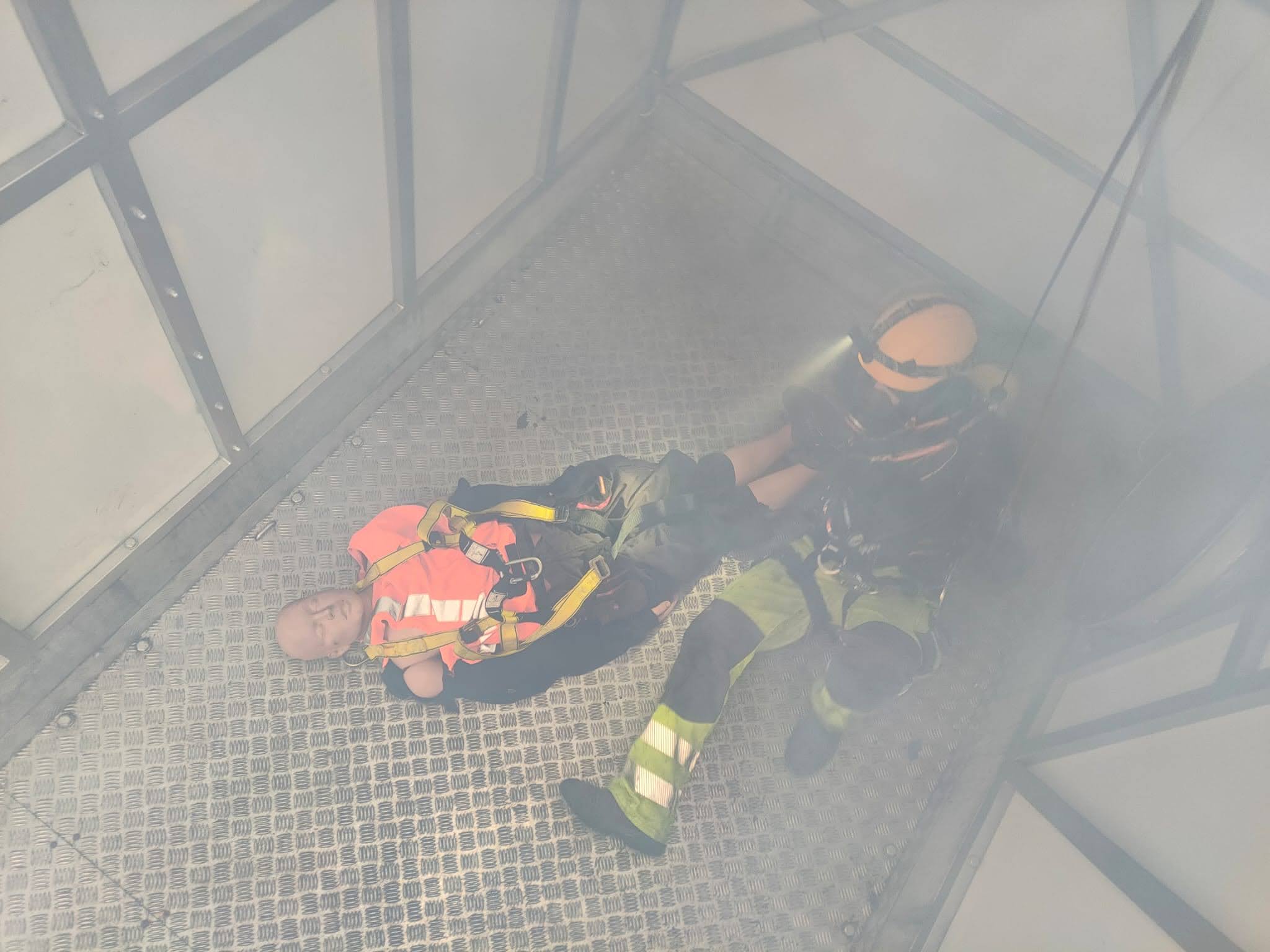
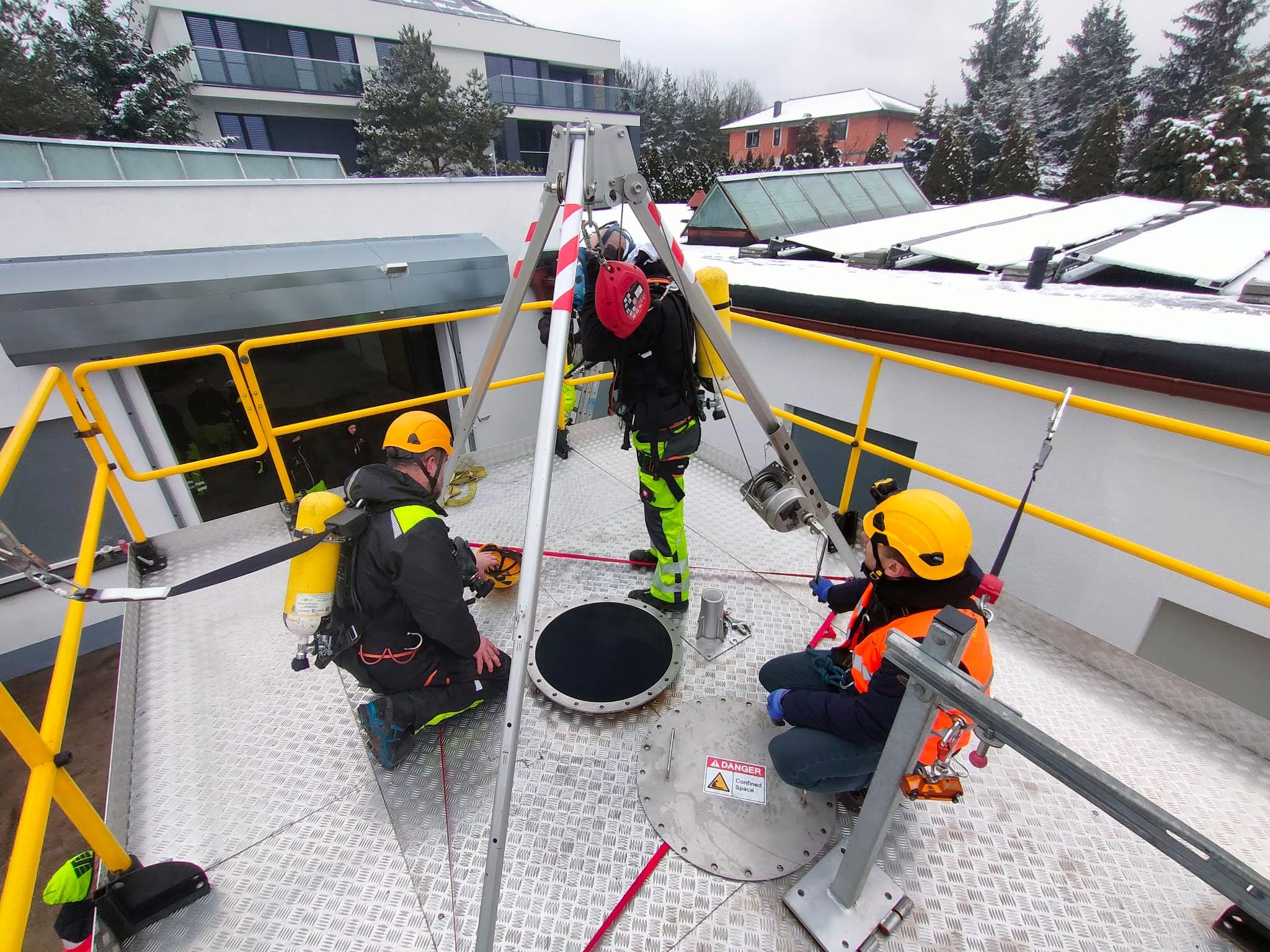
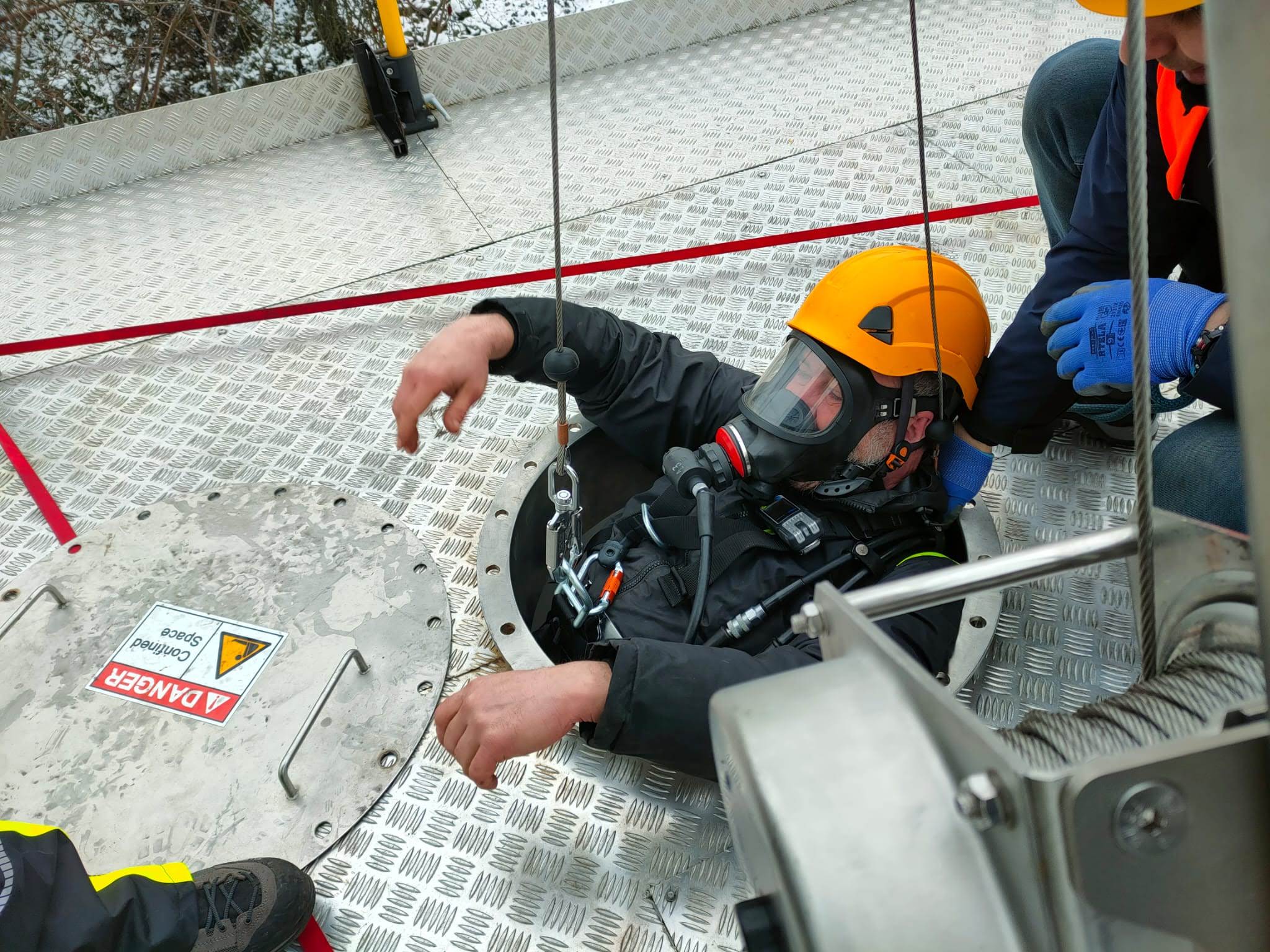
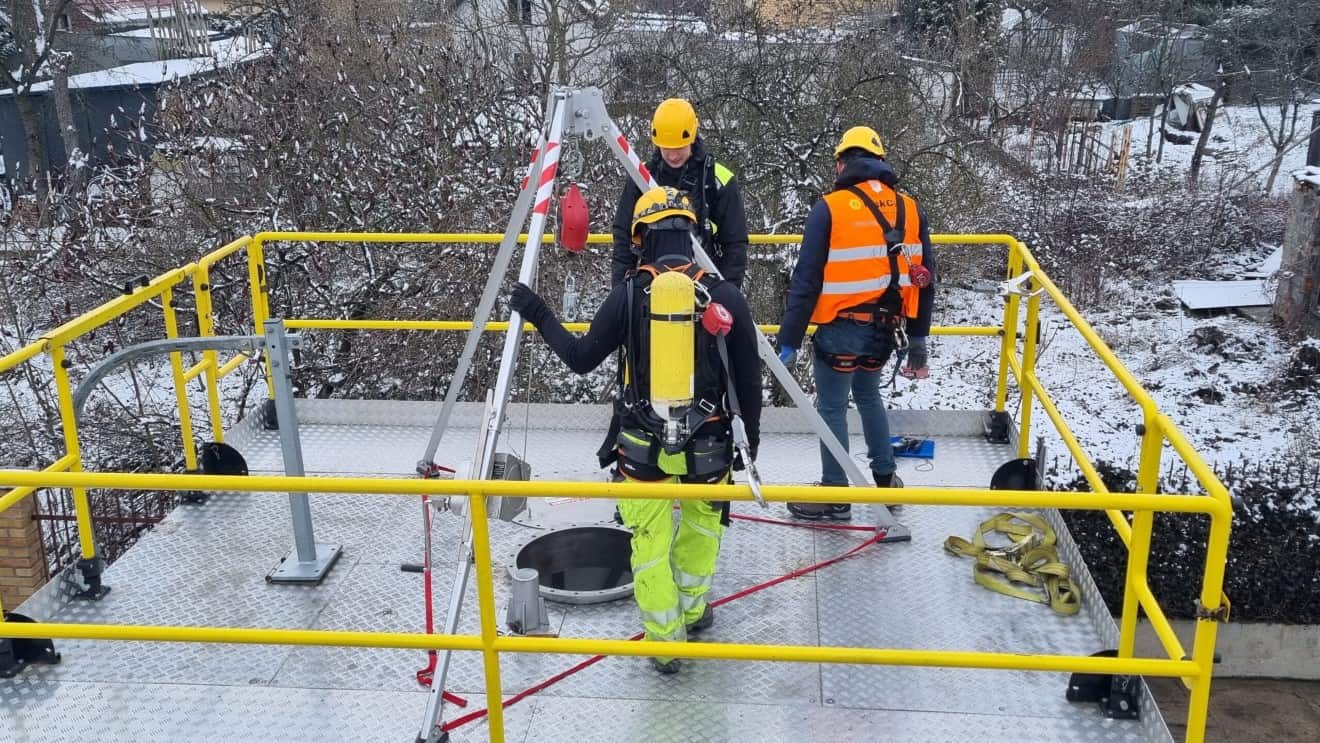
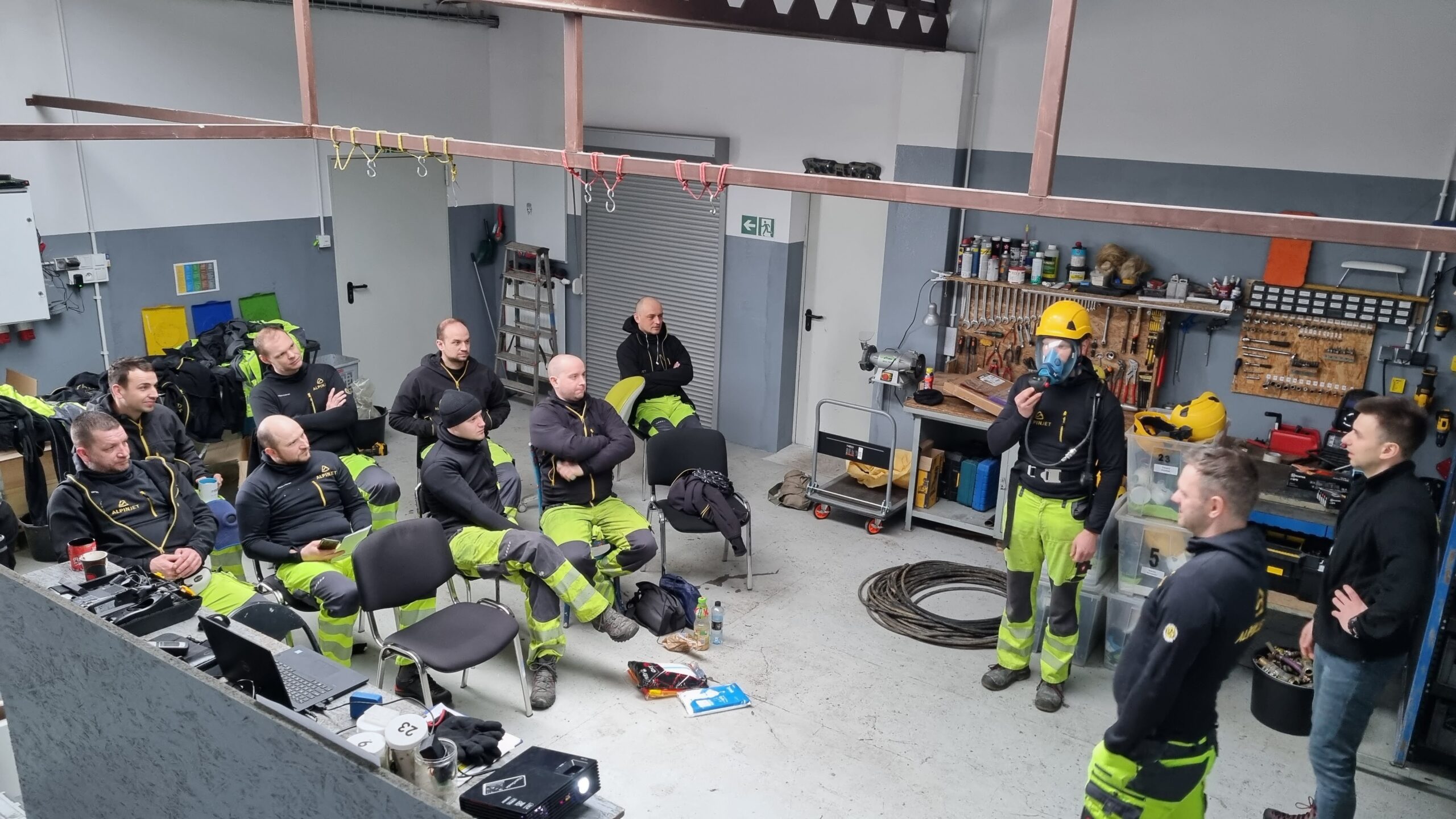
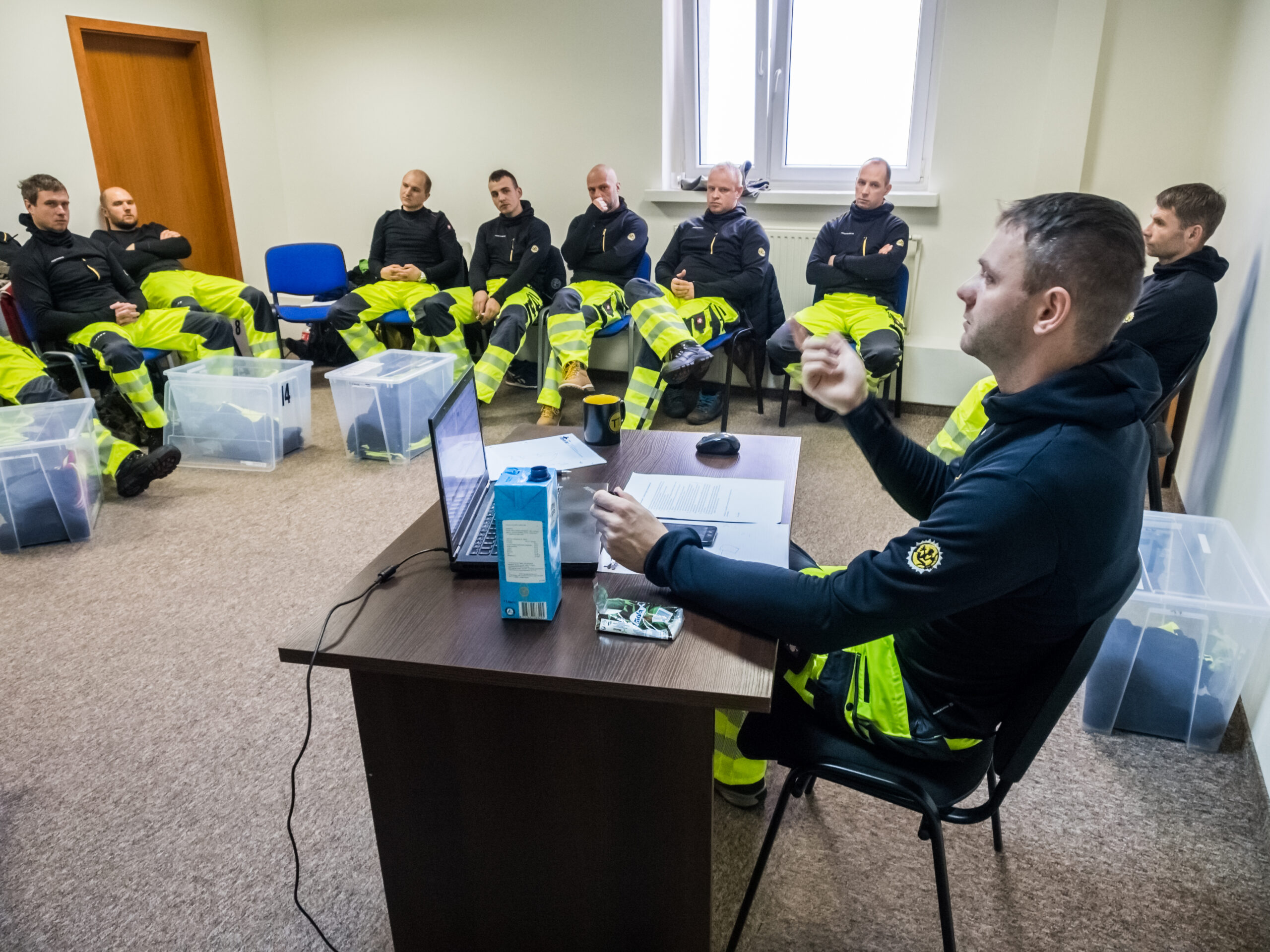
High safety standards via Personal Protective Equipment (PPE)
The various PPE that is currently available effectively protects the operator against nearly all potential risk factors associated with a given cleaning task. AlpinJet has a wide assortment of requisite PPE that can ensure safe working conditions for our operators when cleaning at heights via rope access, inside tanks or in chemical-rich or oxygen-deprived conditions. Our PPE mainly consists of industrial climbing equipment, low oxygen, chemical and motion sensors and of protective, high visibility clothing and face shields.
Industrial climbing equipment and accessories:
- rope access kits – we use certified rope access equipment and gear from Petzl and Singing Rock for work-at-height cleaning tasks. Each item has its own documentation (evidence sheets) and undergoes periodic PPE inspections in accordance with applicable standards. PPE inspections are conducted by authorized, qualified PPE inspectors. We discard equipment that has been damaged, has any defects, is not fit for use or no longer meets the necessary PPE requirements.
- tripod – we mount a portable tripod wherever structurally prepared anchor points and devices are absent (according to EN 795/B). The tripod is used during cleaning operations inside tanks to allow for easy descent and ascent as well as to ensure potential fall arrest.
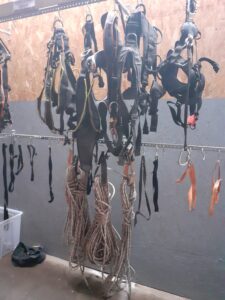
Equipment for cleaning tasks in tanks and in hazardous environments:
- low oxygen and chemical sensors – working in restricted-access tanks with inadequate ventilation can increase the occurrence of potentially hazardous and oxygen-deprived zones. All of our operators are equipped with oxygen, carbon monoxide, methane and hydrogen sulphide gas sensors. The content levels of each gas are measured before the operator enters the tank. The sensor will warn the operator via a sound and light signal if any of the gas concentrations have exceeded normal levels. In many cases the operator will have to wait for the tank to be properly ventilated or will wear a breathing apparatus while working inside the tank.
- protective masks – the operator is always exposed to and might potentially inhale hazardous substances when working in a dangerous environment. Our operators wear full-face masks fitted with ABEK filters, and in extreme conditions they also use a breathing apparatus.
- motion sensors – the operator entering a tank, pipeline, chimney or ventilator will wear a motion detector, as no direct visual contact with the assisting operator standing outside the structure will be possible.
If the operator inside the tank stops moving for a longer time period, the motion sensor will send an initial, loud warning signal (signaling to that operator that he must move). If that operator is unable to move or to react to the motion sensor’s initial warning signal, the sensor will send a sound signal at 90 dB. This warning signal can also be triggered manually by the operator working inside the tank, thus he can alert the operator assisting outside in case of an emergency.
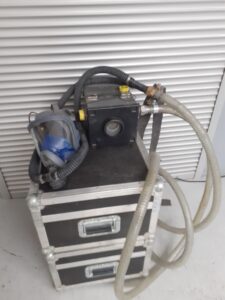
High-pressure waterjetting equipment:
- appropriate ear and hearing protection
- waterjet-resistant armor.
High safety standards via well-planned projects
With our many years of hands-on experience, and since we constantly strive to provide our clients with ever better job performance, each cleaning project is planned and conducted according to integrated quality management principles as outlined in the following ISO standards:
- ISO 9001,
- ISO 14001,
- ISO 18001.
Implementing the above ISO standards has allowed us to better organize our cleaning tasks via being able to better monitor and anticipate any potential incidents during that task. Each cleaning project is organized and supervised by one of our company owners and is implemented by an experienced foreman who is then responsible for the project as a whole and who remains in direct contact with the client.
Once the cleaning project has been ordered by the client, a designated Task Supervisor will evaluate the scope of the project by completing a Task Sheet that will include the client’s specific needs, expectations and basic details regarding that cleaning project.
The supervisor will also prepare a list of task-specific equipment and tools that will have to be reviewed and approved by the foreman. Most tools that might wear out during a specific cleaning task are always packed in twos (nozzles, hoses, jets), thus the risk of on-site downtime due to failure of our equipment is minimized. We take all of the necessary materials and data regarding equipment calibration and choice of waterjet heads and nozzles with us to every cleaning task, thus our foremen and operators don’t waste time solving any potential problems that might appear and use proven techniques and custom solutions that were successfully adopted during previous cleaning projects.
Insuring client property
Our company has an insurance policy protecting against any unforeseeable incidents connected with the safety of the client’s installation or with any of its elements being cleaned. The policy also covers any damages to the client’s movable property that has been entrusted to us during the cleaning task. The insurance coverage amount is 1 million PLN.
